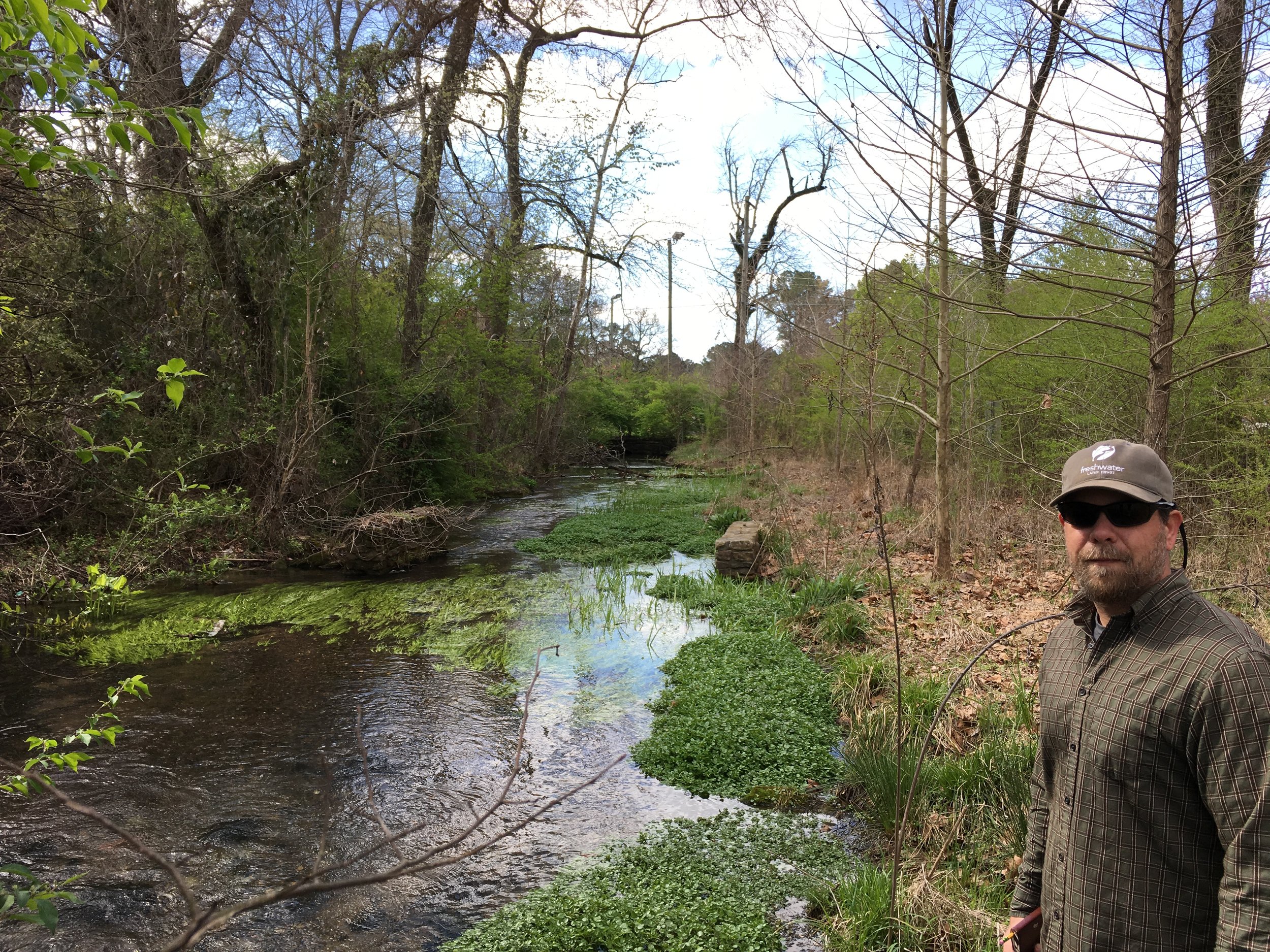The Watercress Darter: A Win for Native Fish
Matt Lewis, PhD - NFC National Vice Chair South
The watercress darter (Etheostoma nuchale) is a small fish that occurs in only four springs in the Black Warrior River drainage in Alabama. Their limited distribution and specific habitat requirements of dense aquatic vegetation in springs and spring-fed runs makes them susceptible to extirpation and extinction.
Watercress darter male in spawning color. Photo by Jeffrey Drummond.
The watercress darter was initially discovered by University of Alabama graduate student, Mike Howell in 1964. Dr. Howell recalls attending a collection of a newly described species of salamander in Bessemer led by his herpetology professor. While examining the collections, Dr. Howell noticed a lone fish in some of the watercress that was collected. He was working on darters at the time, and tried to identify the fish and could not find a match in any available reference books. Dr. Howell wrote renowned ichthyologist, Dr. Reeve Bailey about his findings and Dr. Bailey responded with a 3-page letter telling him how he should describe it. Howell went on to describe the watercress darter in 1965, detailing it differed from its nearest genetic relative, the Gulf darter (E. swaini).
One of the springs that contains native Watercress darters. Photo courtesy of Jeffrey Drummond.
Dr. Howell has had a successful career as a scientist at Samford University where he continued to describe and preserve Alabama’s biodiversity. He worked with USFWS to protect the watercress darter and in 1970, it became Alabama’s first endemic endangered species. Since Dr. Howell’s initial work, we have found a few more populations of watercress darters. Dr. Howell has also had to work to recover one population after the introduction of grass carp decimated the aquatic vegetation required for the life history of the watercress darter. He’s also worked to maintain the spring populations in other systems that have been altered due to beaver damming.
Dr. Howell sampling for Watercress darters. Photo courtesy of Jeffrey Drummond.
Freshwater Land Trust and USFWS have worked with the City of Birmingham to restore the habitat in some of the springs where native watercress darter occur by removing asphalt and replacing it with bioretention areas and restoring native plants to the riparian areas to help reduce erosion from storm water.
USFWS Biologist, Jeffrey Drummond, stands in front of watercress darter habitat. Photo courtesy of Freshwater Land Trust.
In 2023, Dr. Howell released a book titled, History of Birmingham’s Endangered Watercress Darter that chronicles the discovery of this special fish and all the work that has happened and continues to happen to preserve it and its habitat from the constant development and urbanization from nearby Birmingham, Alabama. Dr. Howell is working with CAWACO RC&D to utilize grant money to distribute the book to students of Jefferson County Schools for free so that the next generation of citizens are aware of this special fish and will hopefully be the future voices to ensure its survival.
Dr. Howell’s book: History of Birmingham’s Endangered Watercress Darter.
The Alabama chapter of Native Fish Coalition is honored to have collaborated with CAWACO RC&D and our other partners to post several informational signs around the Birmingham area to help bring awareness to the watercress darter.








